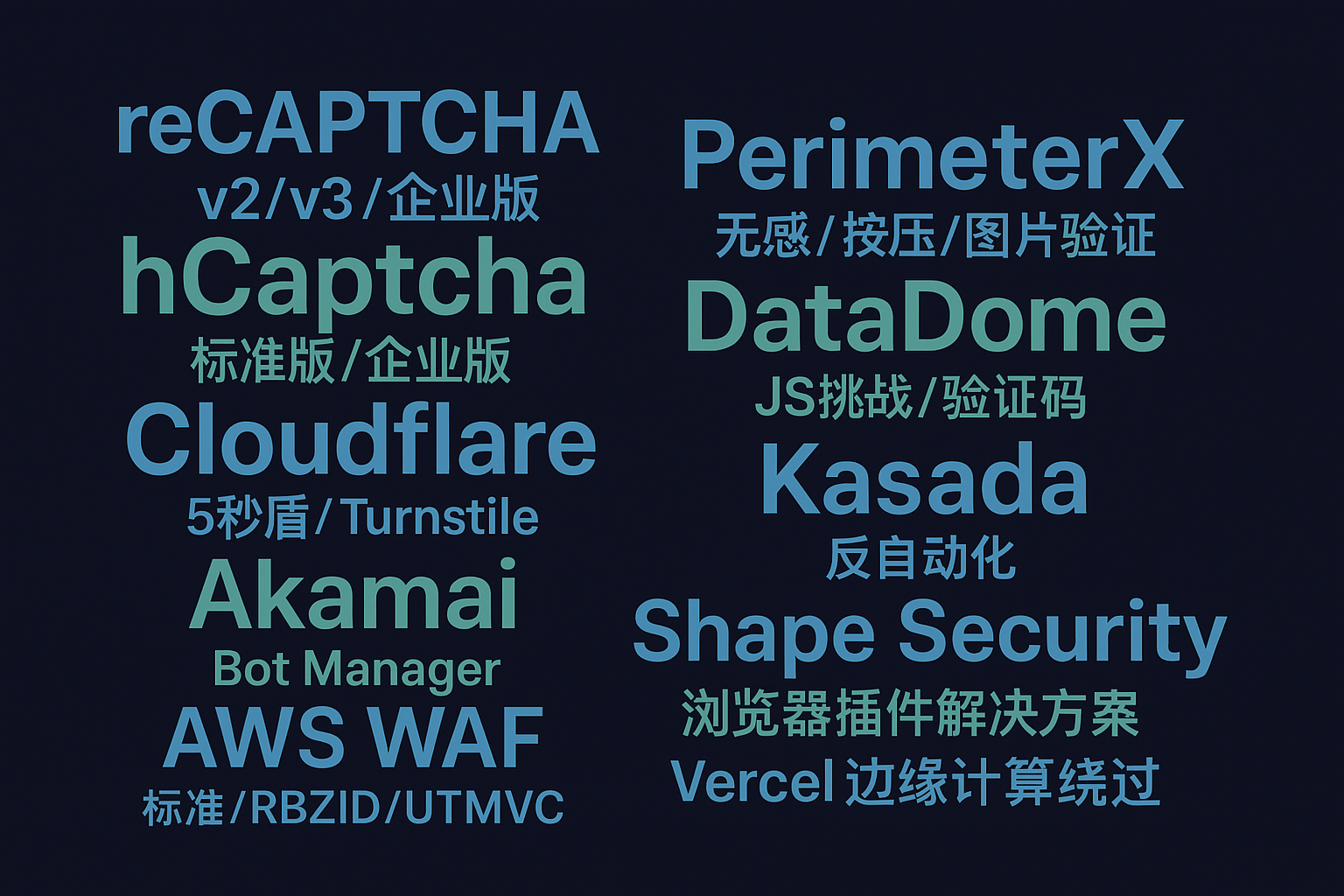自动化测试安全防护体系:AI驱动的智能测试环境安全架构设计
深入探讨自动化测试环境的安全防护技术,构建AI驱动的智能测试安全架构,为现代软件开发流程提供全方位的测试安全保障和防护策略。
自动化测试安全防护体系:AI驱动的智能测试环境安全架构设计
技术概述
在现代软件开发的DevOps和DevSecOps实践中,自动化测试已成为确保软件质量和安全性的关键环节。然而,测试环境本身的安全防护往往被忽视,导致测试数据泄露、测试环境被攻击等安全风险。构建智能化的测试安全防护体系,不仅能保护测试环境免受威胁,更能提升整个软件开发生命周期的安全水平。
AI驱动的智能测试安全架构通过机器学习算法实现测试行为的异常检测、自动化安全策略调整和智能威胁响应。这种创新方法能够在测试执行过程中实时监控安全状况,识别潜在的安全威胁,并自动采取相应的防护措施,大幅提升测试环境的安全防护能力。
本文将深入探讨自动化测试安全防护的核心技术,包括智能测试环境监控、AI驱动的威胁检测、自动化安全策略管理等关键组件的设计与实现,为构建现代化的测试安全体系提供技术指导。
核心原理与代码实现
智能测试环境安全监控系统
自动化测试安全的核心在于实时监控和智能分析。以下代码展示了完整的监控系统架构:
import asyncio
import json
import time
from typing import Dict, List, Optional, Any
from dataclasses import dataclass, field
from datetime import datetime, timedelta
import numpy as np
from sklearn.ensemble import IsolationForest
from sklearn.preprocessing import StandardScaler
import tensorflow as tf
from prometheus_client import Counter, Histogram, Gauge
import docker
import psutil
import logging
# 监控指标
TEST_SECURITY_EVENTS = Counter('test_security_events_total', 'Test security events', ['event_type', 'severity'])
TEST_ENVIRONMENT_HEALTH = Gauge('test_environment_health_score', 'Test environment health score')
TEST_EXECUTION_TIME = Histogram('test_execution_duration_seconds', 'Test execution duration')
@dataclass
class TestEnvironmentConfig:
environment_id: str
test_framework: str
security_policies: List[str]
monitoring_rules: Dict[str, Any]
resource_limits: Dict[str, Any]
encryption_settings: Dict[str, str]
access_controls: Dict[str, List[str]]
@dataclass
class SecurityEvent:
event_id: str
event_type: str
severity: str
timestamp: datetime
source: str
description: str
mitigation_actions: List[str] = field(default_factory=list)
confidence_score: float = 0.0
class IntelligentTestSecurityMonitor:
"""智能测试安全监控器"""
def __init__(self, config: TestEnvironmentConfig):
self.config = config
self.ml_detector = MLSecurityDetector()
self.behavior_analyzer = TestBehaviorAnalyzer()
self.resource_monitor = ResourceSecurityMonitor()
self.data_protection = TestDataProtection()
self.access_controller = TestAccessController(config.access_controls)
self.threat_intelligence = TestThreatIntelligence()
self.docker_client = docker.from_env()
self.security_events = []
async def start_continuous_monitoring(self):
"""启动持续安全监控"""
monitoring_tasks = [
self._monitor_test_execution_security(),
self._monitor_resource_usage(),
self._monitor_network_activity(),
self._monitor_data_access_patterns(),
self._monitor_container_security()
]
await asyncio.gather(*monitoring_tasks)
async def _monitor_test_execution_security(self):
"""监控测试执行安全"""
while True:
try:
# 收集测试执行数据
execution_data = await self._collect_test_execution_data()
# AI异常检测
anomalies = await self.ml_detector.detect_execution_anomalies(
execution_data
)
# 行为分析
behavioral_issues = await self.behavior_analyzer.analyze_test_behavior(
execution_data
)
# 生成安全事件
for anomaly in anomalies:
await self._generate_security_event(
'execution_anomaly', anomaly
)
for issue in behavioral_issues:
await self._generate_security_event(
'behavioral_issue', issue
)
await asyncio.sleep(10) # 每10秒检查一次
except Exception as e:
logging.error(f"Test execution monitoring error: {e}")
await asyncio.sleep(30)
async def _collect_test_execution_data(self) -> Dict:
"""收集测试执行数据"""
execution_data = {
'timestamp': time.time(),
'running_tests': [],
'resource_usage': {},
'network_connections': [],
'file_access_patterns': [],
'api_calls': []
}
# 收集运行中的测试信息
execution_data['running_tests'] = await self._get_running_tests()
# 收集资源使用情况
execution_data['resource_usage'] = {
'cpu_percent': psutil.cpu_percent(),
'memory_percent': psutil.virtual_memory().percent,
'disk_io': psutil.disk_io_counters()._asdict() if psutil.disk_io_counters() else {},
'network_io': psutil.net_io_counters()._asdict()
}
# 收集网络连接信息
execution_data['network_connections'] = [
{
'local_addr': conn.laddr,
'remote_addr': conn.raddr,
'status': conn.status,
'pid': conn.pid
}
for conn in psutil.net_connections()
if conn.status == 'ESTABLISHED'
]
return execution_data
async def _monitor_container_security(self):
"""监控容器安全"""
while True:
try:
containers = self.docker_client.containers.list()
for container in containers:
# 检查容器配置安全
security_issues = await self._check_container_security(
container
)
if security_issues:
for issue in security_issues:
await self._generate_security_event(
'container_security', issue
)
await asyncio.sleep(60) # 每分钟检查一次
except Exception as e:
logging.error(f"Container security monitoring error: {e}")
await asyncio.sleep(120)
async def _check_container_security(self, container) -> List[Dict]:
"""检查容器安全配置"""
security_issues = []
# 获取容器详细信息
container_info = container.attrs
# 检查特权模式
if container_info.get('HostConfig', {}).get('Privileged', False):
security_issues.append({
'type': 'privileged_container',
'severity': 'high',
'description': f'Container {container.name} is running in privileged mode',
'container_id': container.id
})
# 检查网络模式
network_mode = container_info.get('HostConfig', {}).get('NetworkMode', '')
if network_mode == 'host':
security_issues.append({
'type': 'host_network_mode',
'severity': 'medium',
'description': f'Container {container.name} is using host network mode',
'container_id': container.id
})
# 检查挂载点
mounts = container_info.get('Mounts', [])
for mount in mounts:
if mount.get('Source', '').startswith('/') and not mount.get('ReadOnly', True):
security_issues.append({
'type': 'writable_host_mount',
'severity': 'medium',
'description': f'Container {container.name} has writable host mount: {mount["Source"]}',
'container_id': container.id
})
return security_issues
async def _generate_security_event(self, event_type: str, event_data: Dict):
"""生成安全事件"""
event = SecurityEvent(
event_id=f"{event_type}_{int(time.time())}_{hash(str(event_data))}"[:32],
event_type=event_type,
severity=event_data.get('severity', 'medium'),
timestamp=datetime.now(),
source=self.config.environment_id,
description=event_data.get('description', ''),
confidence_score=event_data.get('confidence', 0.8)
)
self.security_events.append(event)
# 记录监控指标
TEST_SECURITY_EVENTS.labels(
event_type=event_type,
severity=event.severity
).inc()
# 触发自动响应
await self._trigger_automated_response(event)
async def _trigger_automated_response(self, event: SecurityEvent):
"""触发自动响应"""
if event.severity == 'critical':
# 关键安全事件:立即停止相关测试
await self._emergency_test_shutdown(event)
elif event.severity == 'high':
# 高危安全事件:增强监控和限制权限
await self._enhance_security_monitoring(event)
else:
# 中低危事件:记录和告警
await self._log_and_alert(event)
class MLSecurityDetector:
"""机器学习安全检测器"""
def __init__(self):
self.anomaly_model = IsolationForest(
contamination=0.1,
random_state=42
)
self.scaler = StandardScaler()
self.is_trained = False
self.feature_history = []
async def detect_execution_anomalies(self, execution_data: Dict) -> List[Dict]:
"""检测执行异常"""
anomalies = []
# 提取特征向量
features = self._extract_features(execution_data)
if not self.is_trained:
# 收集训练数据
self.feature_history.append(features)
if len(self.feature_history) >= 100: # 收集足够的训练数据
await self._train_anomaly_model()
else:
# 执行异常检测
scaled_features = self.scaler.transform([features])
anomaly_score = self.anomaly_model.decision_function(scaled_features)[0]
is_anomaly = self.anomaly_model.predict(scaled_features)[0] == -1
if is_anomaly:
anomalies.append({
'type': 'execution_anomaly',
'severity': 'high' if anomaly_score < -0.5 else 'medium',
'description': f'Anomalous test execution pattern detected',
'confidence': abs(anomaly_score),
'features': features
})
return anomalies
def _extract_features(self, execution_data: Dict) -> List[float]:
"""提取特征向量"""
features = [
execution_data['resource_usage']['cpu_percent'],
execution_data['resource_usage']['memory_percent'],
len(execution_data['running_tests']),
len(execution_data['network_connections']),
len(execution_data['file_access_patterns']),
len(execution_data['api_calls']),
execution_data.get('timestamp', time.time()) % 86400, # 时间特征
]
# 网络IO特征
net_io = execution_data['resource_usage']['network_io']
features.extend([
net_io.get('bytes_sent', 0),
net_io.get('bytes_recv', 0),
net_io.get('packets_sent', 0),
net_io.get('packets_recv', 0)
])
return features
async def _train_anomaly_model(self):
"""训练异常检测模型"""
if len(self.feature_history) < 50:
return
# 标准化特征
features_array = np.array(self.feature_history)
scaled_features = self.scaler.fit_transform(features_array)
# 训练模型
self.anomaly_model.fit(scaled_features)
self.is_trained = True
logging.info(f"Anomaly detection model trained with {len(self.feature_history)} samples")
AI驱动的测试安全策略管理
专业验证码解决方案 - 企业级识别服务的安全实践表明,智能策略管理是测试安全的关键。以下代码实现了AI驱动的策略管理系统:
class AISecurityPolicyManager:
"""AI驱动的安全策略管理器"""
def __init__(self):
self.policy_optimizer = PolicyOptimizationEngine()
self.risk_assessor = RiskAssessmentEngine()
self.policy_generator = AutoPolicyGenerator()
self.compliance_checker = ComplianceChecker()
self.effectiveness_analyzer = EffectivenessAnalyzer()
async def optimize_security_policies(self, environment_data: Dict) -> Dict:
"""优化安全策略"""
optimization_result = {
'optimization_id': f"opt_{int(time.time())}",
'current_policies': [],
'recommended_changes': [],
'risk_reduction': 0.0,
'implementation_plan': []
}
try:
# 评估当前安全策略效果
current_effectiveness = await self.effectiveness_analyzer.analyze_current_policies(
environment_data
)
# 识别安全风险
risk_assessment = await self.risk_assessor.assess_environment_risks(
environment_data
)
# 生成策略优化建议
optimization_recommendations = await self.policy_optimizer.generate_optimizations(
current_effectiveness, risk_assessment
)
# 自动生成新策略
if optimization_recommendations['require_new_policies']:
new_policies = await self.policy_generator.generate_adaptive_policies(
risk_assessment, environment_data
)
optimization_result['recommended_changes'].extend(new_policies)
# 合规性检查
compliance_result = await self.compliance_checker.check_policy_compliance(
optimization_recommendations
)
optimization_result['compliance_status'] = compliance_result
return optimization_result
except Exception as e:
optimization_result['error'] = str(e)
return optimization_result
async def implement_adaptive_policies(self, policy_changes: List[Dict]) -> Dict:
"""实施自适应策略"""
implementation_result = {
'implemented_policies': [],
'failed_implementations': [],
'rollback_plan': [],
'effectiveness_metrics': {}
}
for policy_change in policy_changes:
try:
# 实施策略变更
impl_result = await self._implement_single_policy(policy_change)
if impl_result['success']:
implementation_result['implemented_policies'].append(impl_result)
else:
implementation_result['failed_implementations'].append(impl_result)
except Exception as e:
implementation_result['failed_implementations'].append({
'policy_id': policy_change.get('id', 'unknown'),
'error': str(e)
})
return implementation_result
async def _implement_single_policy(self, policy: Dict) -> Dict:
"""实施单个策略"""
implementation_result = {
'policy_id': policy.get('id'),
'policy_type': policy.get('type'),
'success': False,
'implementation_time': time.time()
}
policy_type = policy.get('type')
if policy_type == 'access_control':
result = await self._implement_access_control_policy(policy)
elif policy_type == 'resource_limit':
result = await self._implement_resource_limit_policy(policy)
elif policy_type == 'network_security':
result = await self._implement_network_security_policy(policy)
elif policy_type == 'data_protection':
result = await self._implement_data_protection_policy(policy)
else:
result = {'success': False, 'error': f'Unknown policy type: {policy_type}'}
implementation_result.update(result)
return implementation_result
测试数据安全保护系统
测试数据安全是测试环境安全的重要组成部分。高级网络技术服务 - 专业技术解决方案提供的数据保护实践指导了以下实现:
class TestDataSecuritySystem:
"""测试数据安全系统"""
def __init__(self, config: Dict):
self.config = config
self.data_classifier = DataClassifier()
self.encryption_engine = EncryptionEngine()
self.access_controller = DataAccessController()
self.anonymization_engine = DataAnonymizationEngine()
self.audit_logger = DataAuditLogger()
async def secure_test_data_pipeline(self, data_pipeline: Dict) -> Dict:
"""保护测试数据管道"""
security_result = {
'pipeline_id': data_pipeline['id'],
'security_measures_applied': [],
'risk_level': 'unknown',
'compliance_status': 'pending'
}
try:
# 数据分类
classification_result = await self.data_classifier.classify_data(
data_pipeline['data_sources']
)
# 基于分类结果应用安全措施
for data_source in data_pipeline['data_sources']:
source_classification = classification_result.get(data_source['id'], {})
if source_classification.get('contains_pii'):
# 应用PII保护
pii_protection = await self._apply_pii_protection(
data_source, source_classification
)
security_result['security_measures_applied'].append(pii_protection)
if source_classification.get('sensitivity_level') == 'high':
# 应用高级加密
encryption_result = await self.encryption_engine.encrypt_sensitive_data(
data_source
)
security_result['security_measures_applied'].append(encryption_result)
if source_classification.get('requires_anonymization'):
# 应用数据匿名化
anonymization_result = await self.anonymization_engine.anonymize_data(
data_source
)
security_result['security_measures_applied'].append(anonymization_result)
# 设置访问控制
access_control_result = await self.access_controller.setup_data_access_controls(
data_pipeline, classification_result
)
security_result['security_measures_applied'].append(access_control_result)
# 计算整体风险级别
security_result['risk_level'] = self._calculate_pipeline_risk_level(
classification_result, security_result['security_measures_applied']
)
return security_result
except Exception as e:
security_result['error'] = str(e)
return security_result
async def _apply_pii_protection(self, data_source: Dict,
classification: Dict) -> Dict:
"""应用PII保护"""
protection_result = {
'measure_type': 'pii_protection',
'data_source_id': data_source['id'],
'protection_methods': []
}
pii_fields = classification.get('pii_fields', [])
for field in pii_fields:
if field['type'] == 'email':
# 邮箱地址哈希化
protection_result['protection_methods'].append({
'field': field['name'],
'method': 'hash_email',
'algorithm': 'sha256'
})
elif field['type'] == 'phone':
# 电话号码部分掩码
protection_result['protection_methods'].append({
'field': field['name'],
'method': 'partial_mask',
'pattern': 'XXX-XXX-****'
})
elif field['type'] == 'ssn':
# 社会安全号完全掩码
protection_result['protection_methods'].append({
'field': field['name'],
'method': 'full_mask',
'replacement': 'XXX-XX-XXXX'
})
return protection_result
def _calculate_pipeline_risk_level(self, classification: Dict,
security_measures: List[Dict]) -> str:
"""计算数据管道风险级别"""
risk_score = 0
# 基于数据分类的基础风险
for source_id, source_class in classification.items():
if source_class.get('contains_pii'):
risk_score += 3
if source_class.get('sensitivity_level') == 'high':
risk_score += 2
elif source_class.get('sensitivity_level') == 'medium':
risk_score += 1
# 安全措施减分
for measure in security_measures:
if measure['measure_type'] in ['encryption', 'anonymization']:
risk_score -= 2
elif measure['measure_type'] == 'access_control':
risk_score -= 1
# 确定风险级别
if risk_score <= 0:
return 'low'
elif risk_score <= 3:
return 'medium'
elif risk_score <= 6:
return 'high'
else:
return 'critical'
技术价值与发展趋势
自动化测试安全防护体系的建设代表了现代软件开发安全实践的重要进步。通过AI驱动的智能安全架构,测试环境能够实现自主的威胁检测和响应,大幅提升了测试过程的安全性和可靠性。这种技术创新不仅保护了测试数据和测试环境,更为构建安全的软件开发生命周期提供了坚实基础。
从技术发展趋势看,未来的测试安全将更加注重自动化和智能化。通过深度学习和强化学习技术的应用,测试安全系统将具备更强的自适应能力,能够根据威胁环境的变化自动调整安全策略。同时,随着云原生技术的发展,测试安全将更多地集成到DevSecOps流水线中,实现安全测试的自动化和标准化。

关键词标签: 自动化测试安全, AI驱动测试防护, 智能测试环境, 测试数据保护, DevSecOps安全, 测试安全架构, 机器学习安全, 测试环境监控
更多推荐
 已为社区贡献26条内容
已为社区贡献26条内容









所有评论(0)